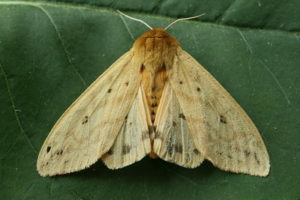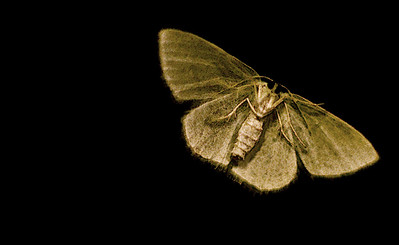While you are outside enjoying these warm summer nights, you most likely will notice an abundance of moths. Some moths are nocturnal, while others are not. You might have even wondered what the purpose of a moth is and may have even thought that they are a nuisance. Some, but not all, actually do serve a significant purpose, which is that some nocturnal moths pollinate.
Nocturnal flowers exist, which have specific traits that attract the nocturnal moths. The flowers that attract moths are usually pale, dull-red, purple, pink, and white. Their strong sweet odor that is emitted at night attracts moths to its hidden, but ample nectar. The flowers have a limited amount of pollen and can be tubular in shape. The purpose of these specific traits that these flowers have to attract the moths is to ensure that its pollen will be successfully carried to another flower with the end result of reproduction.

Hummingbird Moth by: Sandra Richard, Flickr CC
The Oakes’ Evening Primrose (Oenothera oakesiana) is a flowering nocturnal plant that can be found along sandy roadsides or streamsides in the Pine Barrens as well as on maritime dunes. This flowering nocturnal plant attracts moths for pollination. Not all nocturnal flowering plants that can be found on Long Island are native, but they still provide nectar for the nocturnal moths, such as the Moonflower. Moonflowers open at night and give off a fragrant smell in the evening to attract pollinators.

Oakes’ Evening Primrose by: Dan Mullen, Flickr CC
Moths that can be found in the Long Island Pine Barrens and that may pollinate these nocturnal, fragrant, and flowering-plants include, but are not limited to:
- Waxed Sallow (Chaetaglaea cerata)
- A Noctuid moth (Chytonix sensilis)
- Melsheimer’s sack bearer (Cicinnus melsheimeri)
- A hand-maid moth (Datana ranaeceps)
- Barrens Buckmoth (Hemileuca maia maia)
- Imperial moth (Eacles imperialis pini)
- Brown-bordered geometer (Eumacaria madopata)
- A noctuid moth (Eucoptocnemis fimbriaris)
- A noctuid moth (Orthodes obscura)
- Pink sallow (Psectraglaea carnosa)

Isabella Tiger Moth by: Seabrooke Leckie, Flickr CC
As mentioned before, not all moths are nocturnal and not all moths pollinate and some moths are still not fully understood, but they should be appreciated. The next time, which may be tonight, when you are swarmed by the moths of the night, think about the purpose they may serve before well, you know… squishing them.
By: Claire J Moran, Long Island Pine Barrens Society


